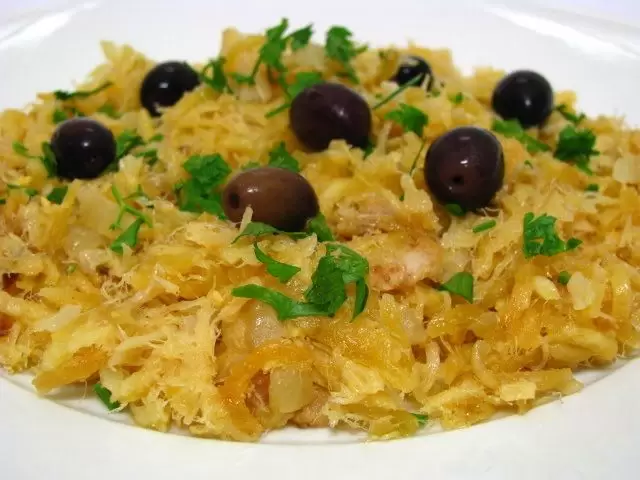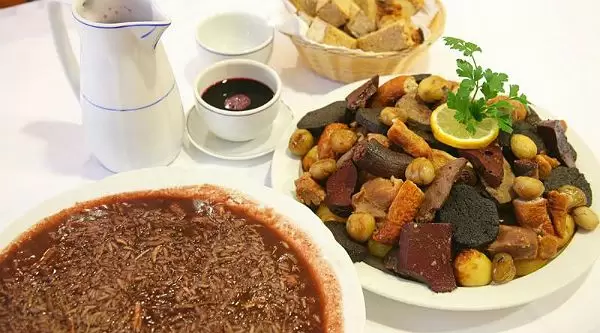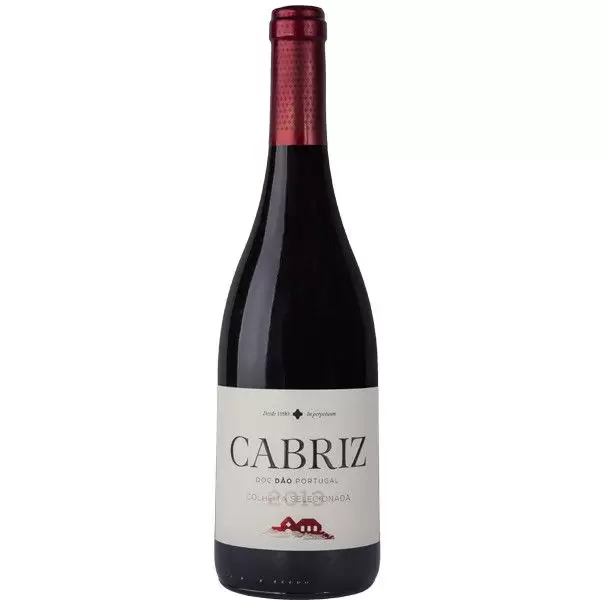Breakfast, snacks








It’s best at a pastry shop where you can order toast, some ham or cheese sandwiches and various pastries. Mixed sandwiches are a combination of ham and cheese – grilled are toast.
Classics include croquettes, pastéis or bolinhos de bacalhau,iscas de bacalhau, chamuscas, bifanas (thin slice of pork fried in bread) and prego (steak sandwich).
There are several typical coffees in Portugal: naturally black coffee, espresso (bica or simply coffee) or a little weaker (carioca). There is also a bit of milk (known as garoto in Lisbon and the south) served in a large glass with milk (galão).
Pastries, cakes and sweets
Pastel de nata is the best-known confection, but there are many more: queijadas from Sintra, Palha de ovos (egg tarts) from Abrantes, bolo de anjo, mil-folhas, a great variety of almond biscuits and the fine sweet (of Arab origin) from the Algarve.
The ovos moles from Aveiro are excellent, as are the pasteis de Tentúgal and the broa de mel – bread made from cornmeal and honey, mainly found in the north. Broa Doce is similar but contains dried fruit.









Restaurants and meals
Portions tend to be generous – usually served from 12:30 to 3pm. Dinner takes place from 7:30pm onwards. In addition to restaurants, you may eat at a tasca, a neighbourhood tavern.
The pub is less formal than a restaurant, with customers popping in at all hours for a beer and a small snack. The tourist menu can be worthwhile, sometimes with 1 choice of 2 starters and 2 main courses, including dessert and a drink.
Dishes and specialities
Many meals start with inexpensive and typical soups. Caldo verde (cabbage-and-potato broth, sometimes ham) is best in the north.
In the south, you have sopa à alentejana (with garlic, bread and scrambled egg). Everywhere there is a vegetable-based soup.
On the coast, especially in the Algarve, shellfish is prominent: crabs, prawns, lobsters, cuttlefish, squid, barnacles and barnacles.
Other seafood specialities include a caldeirada de peixe (fish stew), and açorda (a rural bread stew traditionally made of bread mixed with herbs, garlic, eggs).
The most typical fish dish is derived from dried cod, with 365 different ways of preparing it – almost always served with black olives, but the list of recipes is truly immense.
Baked or grilled sardines provide one of the most familiar smells in the country, and in the Algarve, you should try the cataplana. Always present on menus you have hake, salmon, sea bass and, in the north, trout.









There are grilled, or fried, beef and pork steaks. The carne de porco à alentejana (pork with clams), as the name indicates originates from Alentejo, and Rojões (roast pork pieces, served with black pudding) is typical of Minho and Douro.
The meat is usually best roasted. The country’s roast chicken is almost always seasoned with piri-piri (chilli).
Roasted suckling pig is distinctive in the centre, especially in Beiras. The roast is omnipresent in the mountain areas, where several specialities of the Beiras region appear, namely chanfana (goat stew served in a traditional pot).
Duck is usually shredded and mixed with rice; rabbit is more prevalent in rural areas (hunter style, as a stew).











Other popular meat dishes include Tripas do Porto, cozido à portuguesa (stewed stew of various types of meat and vegetables – don’t be surprised when a pig’s ear appears).
Some traditional dishes use the animal’s blood as their base – sarrabulho and cabidela, both delicious.
Most dishes are accompanied by potatoes (fried in grilled meat dishes. For dessert, you will almost always have fruit salad, seasonal fruit, ice cream lists, flan pudding, rice pudding.
Wines
Portugal is a centre of wine-making excellence: Alentejo, Bairrada, Dão, Estremadura, Douro and Ribatejo attract strong demand.
Most of the wines are from small cooperatives. Some of the best known is from the Douro region: Planalto is an excellent white.
Red wines from the Dão region (area between Coimbra, Viseu and Guarda, around the river Dão) taste like Burgundy. Quinta de Cabriz from Carregal do Sal (near Viseu) is an excellent Dão wine.
The Alentejo has a growing reputation – Reguengos and Monte Velho have the strength and body typical of the region. Other smaller regions with interesting wines are Colares (near Sintra), Bucelas in Estremadura (dry white wine) and Alenquer in Ribatejo.















Green wines, slightly sparkling, are produced in Minho.
They are great with seafood, and Casal Garcia and Gato are 2 brands you see everywhere. The dessert wines (Moscatel) from Setúbal, Porto and Madeira are worth trying.
Port, a fortified wine, is produced from grapes grown in the Douro Valley. Madeira wine has been exported to Britain since the time of Shakespeare.
Portuguese rosé wines are better known outside Portugal, thanks to the successful export of Mateus Rosé.
There is also Portuguese brandy. The most popular are fig brandy, ginjinha (made from cherries). In the Algarve, the best known are medronho and amarguinha made from almonds. The leading brands of beer are Sagres and Super Bock. It is the typical European style lager (about 5% alcohol).



